9.1 – October 2017
The previous chapter hopefully has given you some insights into reading a mutual fund factsheet. The factsheet lists some of the good to know information about a mutual fund. Do remember, the factsheet also doubles up as a marketing document for the Asset Management Company (AMC), hence read through the fund’s factsheet with a pinch of salt.
Starting from this chapter, we will shift our focus on the mutual fund categories. The idea is to discuss the main categories and a few subcategories of mutual funds.
Please note, the term ‘subcategory’ in the context of mutual fund categories does not exist, but I think it makes life simpler if you thought about the mutual fund categories this way.
I’m not sure if we can cover all the subcategories in this module. For example, Debt fund as a main mutual fund category has nearly 16 different subcategories, equity as a category has about 10/11 subcategories. Given this, as you can imagine, discussing the entire gamut of MF categories will digress us from the central theme of this module which is personal finance. The idea here is to lay down a foundation for you to understand the main mutual fund category (and a few subcategories) and hopefully, this foundation will help you understand the many subcategories of mutual fund schemes.
No discussion on the mutual fund universe is complete without touching upon the SEBI’s October 2017 circular on MF categorisation. This circular from SEBI was fairly significant, and it helped simplify the MF universe. To appreciate why this SEBI circular is essential, we need to dig up a bit of history.
Back in the days, the mutual fund world was a bit chaotic. The asset management companies would float many different schemes with overlapping investment ideologies. These funds would often confuse or mislead investors. For example, an AMC would run a ‘large-cap fund’, which by definition should predominantly have only large-cap stock, but these AMCs would stuff in small-cap stocks, which as you can imagine bumps up the volatility (and the return) of the fund. A typical large-cap investor would sign up for the market returns plus lower volatility, but the presence of small-cap stocks in a large-cap fund kind of defeats the purpose.
Here are a bunch of other problems that existed pre-Oct 2017; these problems existed mainly due to the lack of proper mutual fund classifications and definitions.
Multiple funds – An AMC would launch numerous funds with similar investment objectives. For instance, it was common for an AMC to have multiple large-cap or mid-cap schemes, while all these funds had the same investment objective. The distinction between the funds was not too clear.
Lack of definition – While an AMC would title their scheme as a large or mid-cap fund, it would contain stocks from other market capitalisation. The problem occurred because there was no formal definition of market capitalisation.
Portfolio composition – The mutual fund schemes lacked a clear definition in terms of portfolio composition. For instance, the portfolio of a mid-cap fund is expected to hold mid-cap stocks, but it was common to find funds with a large proportion of small-cap stocks while the name of the fund suggested the fund was a mid-cap focused fund.
These problems led to a series of other issues. One of the major concerns was with benchmarking of funds. A large-cap fund is benchmarked against a Nifty 50 index; now we have a problem if a fund with small-cap stocks gets disguised as a large-cap fund and gets benchmarked against a large-cap index. The performance of such a ‘large-cap fund’ (at least in bull markets) is bound to get skewed and offers an abnormal positive return, often misleading the investor.
SEBI addressed these problems with the Oct 2017 circular. You can find the original circular here.
The circular clearly defined the market capitalisation of stock, which naturally solved a few legacy issues in the mutual fund world. As per the definition –
Large-cap stocks – 1st to 100th company in terms of full market capitalisation
Mid-cap stocks – 101st to 250th company in terms of full market capitalisation
Small-cap stocks – 250th company onwards in terms of full market capitalisation
With this formal definition, there was no longer ambiguity on the market capitalization, and the AMCs were now forced to comply with the definitions.
Further, SEBI mandated that an AMC can have only one scheme in any category (except for the thematic, index fund, and fund of funds). This mandate put a stop to AMCs offering a bouquet of schemes with an overlapping investment thesis. To make things clear, SEBI defined the portfolio composition as well. To put this context, post the circular, if an AMC were to run a large-cap fund, then SEBI not only defined what large-cap is but also set the minimum number of large-cap stocks (in % terms) the fund should hold in its portfolio.
Anyway, let us jump to the different mutual fund categories and subcategories and start exploring them. The idea here is to understand these categories and invest in them based on our financial situation in life.
9.2 – The Mutual fund universe
Primarily, there are five different categories of mutual funds under which there are many different categories. Think of them as a ‘category – subcategory’ way of classification. Here are the main categories –
- Equity
- Debt
- Hybrid
- Solution-oriented
- Other schemes
The entire ‘category – subcategory’ structure is as follows –
To begin with, we will focus on Equity as a category. As per SEBI’s circular, an AMC is supposed to run only one scheme per category. For example, an AMC can have only one large-cap, one mid-cap, one small-cap so and so forth.
However, under Equity, an AMC can have multiple sectoral funds.
9.3 – Equity Category
The equity category is perhaps the most popular MF category in terms of retail participation. As the name suggests, the schemes under the equity category invest in listed company shares. As you are aware, there are many different styles of investment in the market. A few of these popular styles have been picked and formally inducted into the ‘Equity category’. As you can see from the image above, there are nearly 11 different subcategories within the Equity category. Each of these categories is a different style of investing in the market, and they all differ in their risk and reward characteristics. However, the general philosophy of investing in an equity scheme remains the same, i.e. to generate wealth. What differs across these categories is essentially the timeline of this wealth generation and like I mentioned, the risk and reward.
Over the years, thanks to my profession, I’ve had the opportunity to interact with many people about mutual fund investing. One thing that I can tell you with confidence is that most of them approach mutual fund investing (at least in the equity funds) with unrealistic expectations. Some even go to the extent of looking at mutual funds as a proxy for direct stock investing. They almost have a trading attitude with their funds. Such an approach to mutual fund investing can have dangerous consequences for your capital.
Unless you have the right expectation and attitude towards equity investing, it is nearly impossible to generate wealth from mutual fund investing. So what is the right expectation/attitude when investing in an equity-oriented mutual fund.
Well, the true answer to this question depends on the exact subcategory of the mutual fund you are looking at. However, here are a few generic pitfalls to avoid –
- Not a short term solution – Equity oriented mutual funds are not a solution for your short term financial goals. By short term, I mean 2-3 years kind of time frame. Invest in equity-oriented funds only if you have the necessary time it deserves. To put this in context, I started investing in an equity mutual fund in 2006, it is the 14th year as of 2020, and I continue to invest in it. I’m not suggesting that you need to stay invested for this long a period, all I’m trying to say is that you need to have a super long term approach to mutual funds. I’d say at least ten plus years (my personal opinion). Anything lower than this can be a futile attempt at wealth creation.
- Why not short term? – One of the common follow up questions is why not consider equity mutual fund for short term investments. Well, there have been instances where short term mutual fund returns have swelled. It requires a great amount of market study to figure and time this. Now, if you as a common man investing in the market can time the market, then why invest in mutual funds at all? You may as well invest in stocks directly, right?
- Understand time – You may have heard of the saying, ‘time heals everything’. Well, this is true for market volatility as well. The market is volatile; this is the very nature of this beast. However, the only way for a common man to deal with volatility is to give your investment sufficient time. Hence, a short term approach to MF investing does not work.
- Don’t keep switching – I’ve seen investors switch between mutual funds as they would switch between their browsing tabs. Switching is essentially redeeming the units from ‘Fund A’ to invest in ‘Fund B’, for no real reasons. In my opinion, this cannot be packaged as long term investing. The true definition of long term investing is staying invested in a fund across a multi-year period (and across multiple market cycles). Of course, occasionally there will be justifiable reasons for you to switch between funds, we will identify these reasons at a later point.
- Headline investing – Most investors get carried away by newspaper headlines. A headline which remotely hints at ‘bearishness’, is taken way too seriously and used as a reason to exit an ongoing mutual fund investments. I’m guilty of doing this mistake myself. Back in 2007, I pulled out of a fund that was doing very well because I read a headline saying markets are likely to go down shortly. The problem here is not just with the withdrawal; it is actually with the fact that you are breaking an ongoing investment journey. I was never able to restart this investment.
Trust me; you will do far better than most of the investing public if you understand these basic points which make a big difference to your investing journey. Here is how my investments in Mutual funds have done till date –
These are all regular funds. Unfortunately, the direct fund option was not available back in the days. The returns would have been better, had I decided to invest in the same fund, direct option. I’m in the process to transition all my regular to direct funds. Hopefully, this table should look better over the next decade 🙂
Also, I think three large-cap funds in my portfolio is an overkill, and perhaps I should look at replacing at least two of these funds with a low-cost index fund. At a later stage, I’ll share my thoughts on this topic related to asset allocation and fund diversification.
We will now proceed to understand a few of these subcategories of equity mutual funds.
9.4 – The Equity mutual fund subcategories
Under the broad classification of equity funds, there are nearly ten subcategories. As you may have noticed, the name of these subcategories is quite descriptive and gives out a general idea about what to expect from such a fund.
Large-cap fund – As the name suggests, a large-cap equity fund indicates that the fund invests predominantly in large-cap stocks. These are the top 100 companies in India, with the largest market capitalisation. The expectation is that these companies are also market leaders in the industry they belong to. These companies are also supposed to be stable and safe. Examples of large-cap stocks include companies like TCS, Reliance, Infosys, HDFC Bank, etc.
Have a look at the portfolio of one of the large-cap mutual fund schemes. This is the portfolio of Axis Bluechip fund –
As you can see, the portfolio predominantly contains large-cap stocks (80%), invested in varying proportions. The weight assigned to each stock is the fund manager’s prerogative. By the way, you may be interested to know that by regulation, once a month, the AMC is supposed to disclose the portfolio details. So go to the AMC’s website and lookup for any fund you are interested in, and you’ll find the portfolio details in the ‘statutory disclosure’, section.
Usually, when an investor decides to invest in a large-cap fund, he has a twin agenda – (1) capital appreciation in line with the markets, (2) low volatility. By low volatility here, I mean with respect to small and mid-cap funds.
In simple words, this means that the investor is looking at wealth creation but with not so much risk to his capital. Do remember, these are large-cap stocks, meant to be stable hence less volatile. Of course, by virtue of investing in the stock market either directly or via a mutual fund, the capital is exposed to volatility. Like I mentioned earlier, the only antidote to volatility is time. So it goes without saying that you need to stay invested for a long period to factor in the volatility and generate decent returns.
Here is a look at how the top large-cap mutual funds have performed over the last ten years. I’ve defined ‘top’, by considering the size of the fund’s AUM. I’ve taken this data from Moneycontrol –
The key point to note here is the positive return across all the funds against a long investment horizon.
Mid-cap/small cap/large & midcap funds – I guess the names are quite clear for us to know what to expect from the fund.
The mid-cap fund predominantly consists of mid-cap stocks and the small-cap funds contain small-cap companies. The volatility in mid and small-cap stocks is quite high. Like the large-cap stocks, investment in these funds should be long term. You cannot afford to invest on a short term basis in these funds. For example, here is how the small and mid-cap funds have performed over the last two years –
The last two years have been particularly bad for the small and mid-cap stocks, and this is evident across the fund’s returns. I’m not trying to say that the returns across all two years or three years (or any short term cycle) will always be bad. It depends on the market; however, for a common man, it is nearly impossible to time the market and calls the cycles. Hence when we invest, we should have a long term agenda, or at least have the intent to stay invested for the long term.
Here is how some of these small and mid-caps have performed over the last ten years –
All the funds have delivered a fairly decent positive return. Also, notice the ten-year performance of small and mid-cap funds are better than the large-cap funds; this should be evident to you because small and mid-cap funds are more volatile compared to large-cap funds.
The intent behind investing in either of these funds is the same as large-cap i.e. wealth creation over a long period. However, you expect a return much higher than a large-cap fund (against much higher volatility). This is obvious because the fund contains companies which have a long headroom for growth. As the company grows, so would the returns.
The large and mid-cap fund is a cocktail of both mid and large-cap stocks. Unlike an exclusive large/mid/small-cap fund, the ‘large & mid’ cap fund is expected to have 35% of its investment in large-cap and another 35% in mid-cap stocks. For example, this DSP large and mid-cap fund has stocks like Infosys, Airtel, HDFC Bank, and also, stocks like Hexaware, Hatsun Agro, and V Guard. Technically the fund can be a 65% large (or mid) and 35% mid (or large) cap stocks. The extent of the skew depends on the fund manager.
Since the large and mid-cap fund is a mixed bag, the expectation on the return front is slightly higher than a regular large-cap fund but lower than a small-cap fund. The risk is higher than a large-cap fund but lower compared to mid or small-cap fund. Here is how the returns for small and mid-cap stack up for the last ten years –
By the way, given that there are so many AMCs and therefore so many different funds for the same category, how would one narrow down on a single fund to invest in? Well, this is a different topic altogether, and it involves looking at various parameters on risk, returns, performance, and costs. We will take this up after we finish all our discussions on MF categories.
In the next chapter, we will discuss the remaining few Equity subcategories and then move to debt.
Key takeaways from this chapter
- Large-cap stocks – 1st to 100th company in terms of full market capitalization
- Mid-cap stocks – 101st to 250th company in terms of full market capitalization
- Small-cap stocks – 250th company onwards in terms of full market capitalisation
- Large-cap funds should contain at least 80% in large-cap stocks. Large-cap funds are expected to have lower volatility and steady returns
- Mid-cap and small-cap funds have higher volatility and return expectation compared to the large-cap funds
- Mid and large-cap stocks contain at least 35% each of mid and large-cap stocks.



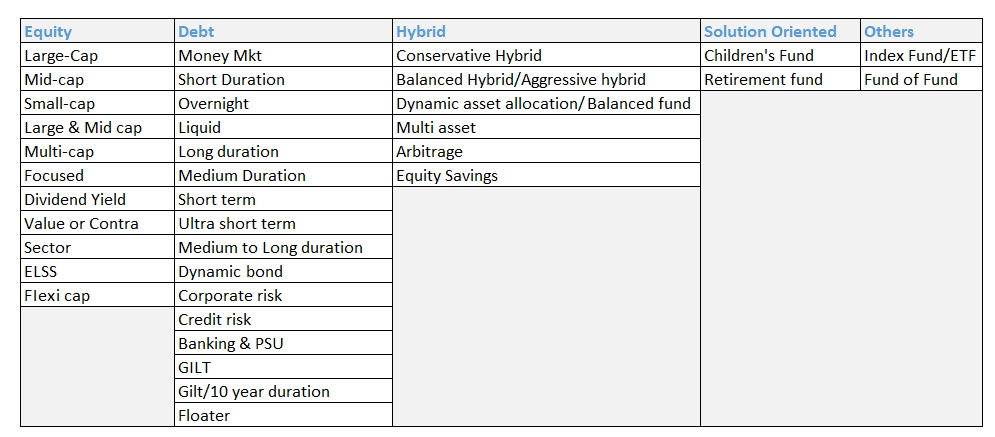
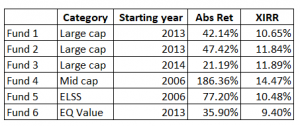
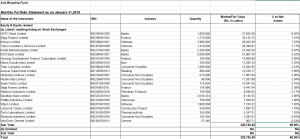
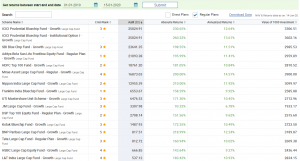


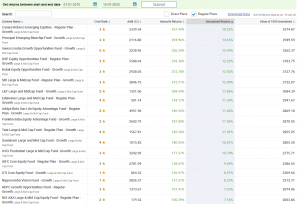
Please provide download link on below this chapter
The PDF will be available once the module is complete. This is work in progress.
very useful article sir…please give its pdf…
The PDF will be available one when the module is complete. This module is work in progress.
Why u stopped “opinion” on varsity app sir?
Keshav will restart that in a week or two 🙂
Where is Equity Scheme Part 2 article ?
I’m working on it, will be posted in a week 🙂
Very informative information. Request to provide the complete information regarding Mutual Fund. Eagerly waiting.
We are working on it. Will add more content in the coming days.